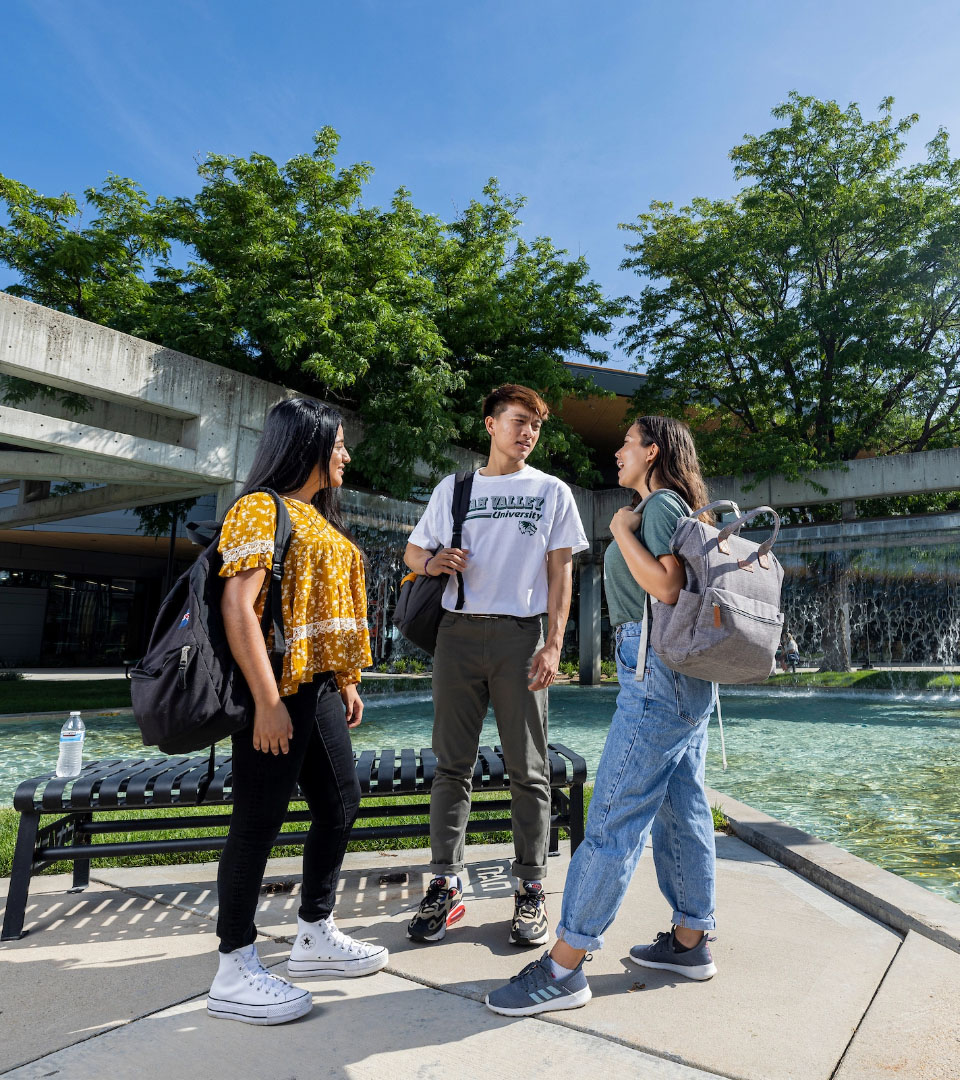a. INCREASE ACCESSIBILITY TO AND FLEXIBILITY OF EDUCATION THROUGH A COORDINATED PHYSICAL AND DIGITAL PRESENCE
A key to student success is ensuring that students can enroll in the classes they need — when they need them, where they need them, and how they need them. UVU educates students at dozens of physical locations within the state of Utah and online throughout the world.
Broaden UVU Educational Offerings Across Delivery Modalities
Based on the UVU Facilities Master Plan approved by the Utah Board of Higher Education, UVU’s Orem Campus is the primary hub of academic, student support, athletic, and administrative activities. These services support university locations in Provo, Lehi, Vineyard, North Orem, and Wasatch County; a planned facility in Payson; and more than 50 high school concurrent enrollment and community partnership sites statewide. Additionally, UVU’s mostly undeveloped 225-acre site in Vineyard provides a great resource for supporting future growth. Through optimized course scheduling and an expansion of hybrid classes, these physical campuses will continue to provide students with flexible and robust offerings that keep them on track to complete their degrees.
A significant expansion of live-stream and online courses and continuous adoption of emerging technologies (cloud computing, data analytics, augmented reality, machine learning, artificial intelligence, and more) allow UVU to provide additional flexible and high-quality educational options. UVU offers dozens of academic programs fully online (including certificates and associate, bachelor’s, and master’s degrees) and will continue to grow the number of online programs. Retention indicators show that students taking a mix of course delivery modes have a 72% likelihood of persisting toward graduation — almost 10% higher than students enrolled in a single delivery mode. Expanding offerings across various delivery methods enhances flexibility, relevance, and learning.
Improve Access to Campuses
Utah County’s growth has been a major factor in UVU’s planning efforts. The Orem, Vineyard, Lehi, Provo, and (future) Payson campuses are easily accessible from I-15. As UVU’s Facilities Master Plan recognizes, thousands of UVU students commute from Salt Lake, Davis, and even Weber counties. Working closely with Utah Transit Authority (UTA) and local governments, UVU has planned and continues to plan for connectivity to a full range of multi-modal transportation systems, including expanded roadways, FrontRunner (light rail), UVX (bus rapid transit), future TRAX expansion, and active transportation (bike, pedestrian, and trail) systems.
FrontRunner and UVX
UVU’s Facilities Master Plan is built on a model using FrontRunner as a point of connectivity for UVU’s campuses. Through an agreement with UTA, UVU students, employees, and their dependents may ride UTA for free. The Orem Campus is served by UVX (UTA’s bus rapid transit line), connecting it to Orem and Provo transit hubs.
Pedestrian-friendly private student housing
While many UVU students live with family members, privately developed housing near the Orem and Vineyard campuses support living and learning opportunities for students seeking a residential university experience. UVU plans to continue expanding partnerships to provide affordable housing options on or near the Orem, Vineyard, and Wasatch campuses.
The above measures, combined with flexible educational and online offerings, will help stagger the flow of students physically accessing UVU’s campuses and reduce traffic and other pressures on neighborhoods and communities. These efforts support student success by reducing physical access barriers, such as traveling to campus and looking for parking, thus keeping students focused on learning.


